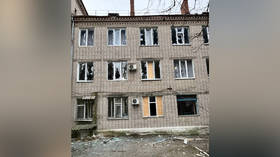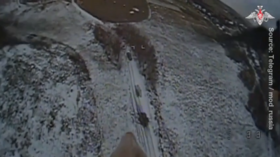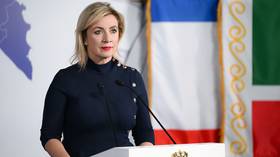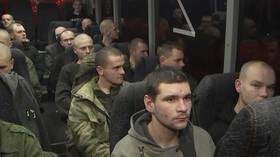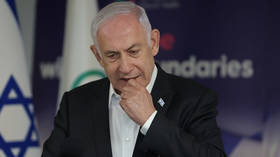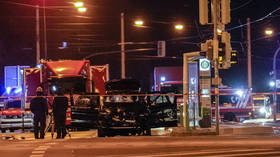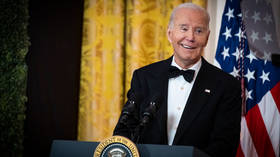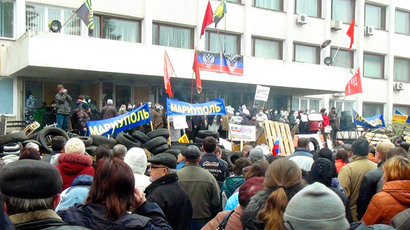Ukrainian recipe for tackling dissent: More mini-armies, bounty payouts
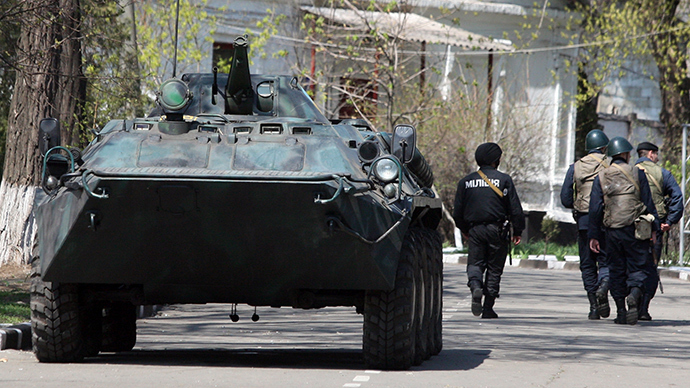
Several Ukrainian politicians have announced the set-up of new military units for coping with the unrest in the country’s East. And one of them suggested bounty-payouts for giving up arms and handing in ‘mercenaries.’
Follow RT’s LIVE UPDATES on military operation in eastern Ukraine
The Dnepropetrovsk regional authorities have come up with the idea of offering money to anti-government activists in eastern Ukraine in return for giving up their protest activities.
“I’ve been thinking a lot about events in Donetsk and Lugansk,” Deputy head of the Dnepropetrovsk region, Borys Filatov, wrote on Facebook. “There’s only one conclusion – this is a revolution of the poor, the rebellion of tired and desperate people, unheard by the government.”
The politician refrained from saying the authorities should at least listen to those “poor” who do not support the new government in Kiev. Instead, he offered a way for the “poor” to get rich by handing in their weapons and getting cash compensation.
Filatov also came forward with a draft price-list for compensatory measures.
“For each gun handed in there’s a payout: US $1,000 for an assault rifle, US $1,500 for a machine gun, and US $2,000 for a grenade launcher.”
Filatov also announced a bounty of US $10,000 for mercenaries or the so-called “little green men,” the people in military uniforms without insignia who are Russian troops. President Putin dismissed as “nonsense” any such allegations at a Q&A session on Thursday.
The highest reward, according to the pricelist, will go to those who free government buildings from protesters – US $200,000.

The Dnepropetrovsk region will be able to afford the payouts as it’s now headed by one of Ukraine’s oligarchs, Igor Kolomoysky.
Besides publishing the bounties pricelist, Kolomoysky’s deputy, Borys Filatov, announced that a special battalion “Dnepr” had been created in the region and Dnepropetrovsk was fortified with check-points.
The Dnepr battalion is just one of several military units recently created by the new Ukrainian authorities.
In mid-March Ukraine’s National Guard was formed from the Maidan self-defense squads which helped bring down President Yanukovich. It was announced back then that the Guard will number 60,000 personnel.
On Monday, Interior Minister Arsen Avakov announced the creation of yet another military entity – special police divisions to preserve public order. Avakov said he was ready to recruit 12,000 people throughout the country, supplying them with weapons and equipment.
The leader of the Batkivshchina party and presidential candidate, Yulia Timoshenko, said this week she was creating a “Movement of the people’s resistance” from retired servicemen, including task force veterans. She explained the move by the need to “fight Russian aggression.”
Timoshenko said the movement will be financed with the help of an international fund she is introducing.

So far efforts to quell protests in eastern Ukraine by means of a military operation have suffered some setbacks.
Armored personnel carriers (APCs) which entered the town of Kramatorsk on Wednesday were surrounded and blocked by local residents. Six of the APCs eventually switched sides and joined the protesters.
The defecting soldiers explained their decision by saying they were unwilling to go into battle against civilians.
People in eastern Ukraine, meanwhile, fear the worst is yet to come and insist it’s the locals, not Russian troops, who are trying to stop the tanks sent by Kiev.
“The National Guard is scary – those are the people who’ve gone through Maidan, who’ve used weapons,” a resident of Izyum in Kharkov region told RT.
“Who should these armies protect us from? They say it’s from armed separatists. But in Slavyansk and Kramatorsk people say they will lie down in front of the tanks. Ukrainian mass media is screaming that these are Russians, but no, they are locals.”


